The fossil record refers to all known organisms represented as fossils, the preserved remains of a once-living thing. Fossils can come in a wide range of shapes, sizes, and forms, ranging from microscopic bacteria to giant dinosaurs and whales. But it isn’t just their variety that makes fossils so interesting―it is also the order in which they appear in the rocks beneath our feet. Why is this? Can we explain it from a young-earth perspective?
It’s Like a Stack of Pancakes…

Think about the last time you had a stack of pancakes for breakfast. Let’s say you had berries in the pancake on the bottom of the stack. In the second one up, there are nuts. Finally, the one at the very top contains chocolate chips.
Now let’s assume the person eating next to you is also eating pancakes, and you can see that their pancake fillings are the same as yours, from bottom to top: berries, nuts, and chocolate chips. The person eating across the table from you is also eating pancakes, and their fillings are also the same as yours. In fact, everyone in the restaurant is eating pancakes with the exact same fillings, and they are lying in the exact same order on top of each other. When the waitress brings out the next stack of pancakes to a hungry customer, you can even predict what their fillings will be and what order they will be in.
The fossil record is much the same way. Though exceptions exist,1 we generally find fossils in a very predictable pattern in the earth’s rock layers. Each fossil species is generally restricted to a specific rock layer or series of rock layers. For example, we have never found fossils of a pterosaur alongside those of a woolly mammoth, nor would we expect to find a fossil trilobite alongside those of a dinosaur. We call this observation the principle of faunal succession.
Do We Always Find Fossils in a Particular Order?
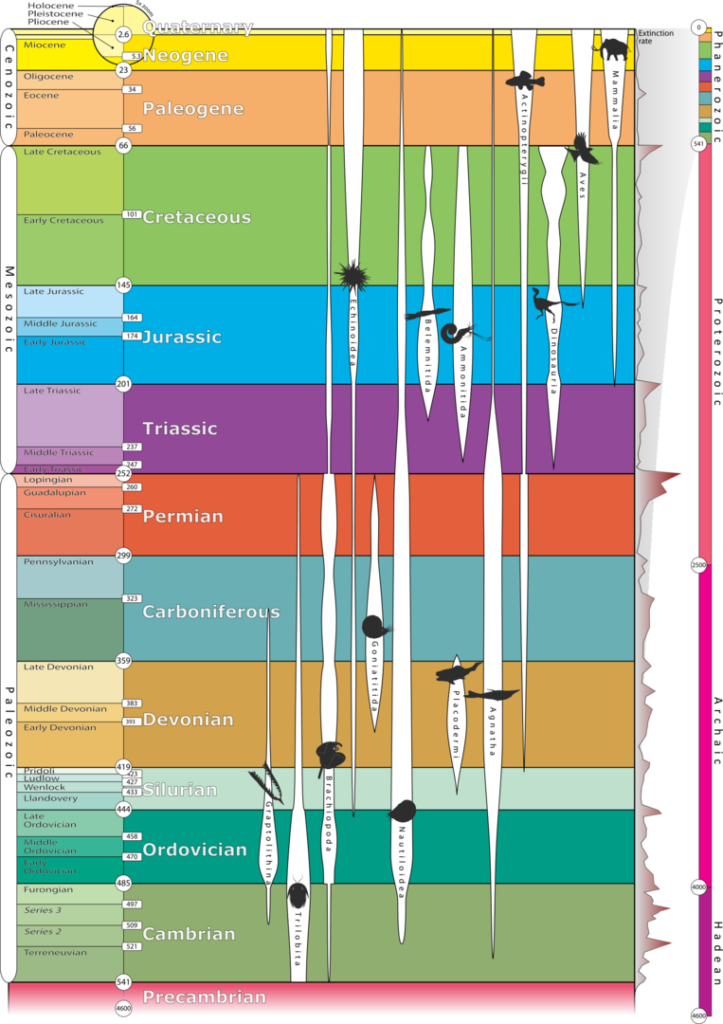
The lowermost layers of the fossil record, our “pancake stack,” are mostly made up of algae and microbes. Complex life shows up above these with the sudden appearance of diverse bottom-dwelling creatures, like trilobites, echinoderms, jellyfish, mollusks, sponges, and marine worms. Vertebrates show up in somewhat higher layers in the form of jawless fish. Then, the land plants show up higher still, followed by land-dependent insects. Next we see the appearance of four-legged land animals. Many of these would have resembled modern reptiles and amphibians, while others were unlike anything alive today, like the non-mammalian synapsids. Following these creatures are the dinosaurs, and ancient mammals and birds. Finally, we find more “modern-looking” mammals and birds, with humans not showing up until the very top of the fossil record.
Do We Find Any Fossils Out of Place?
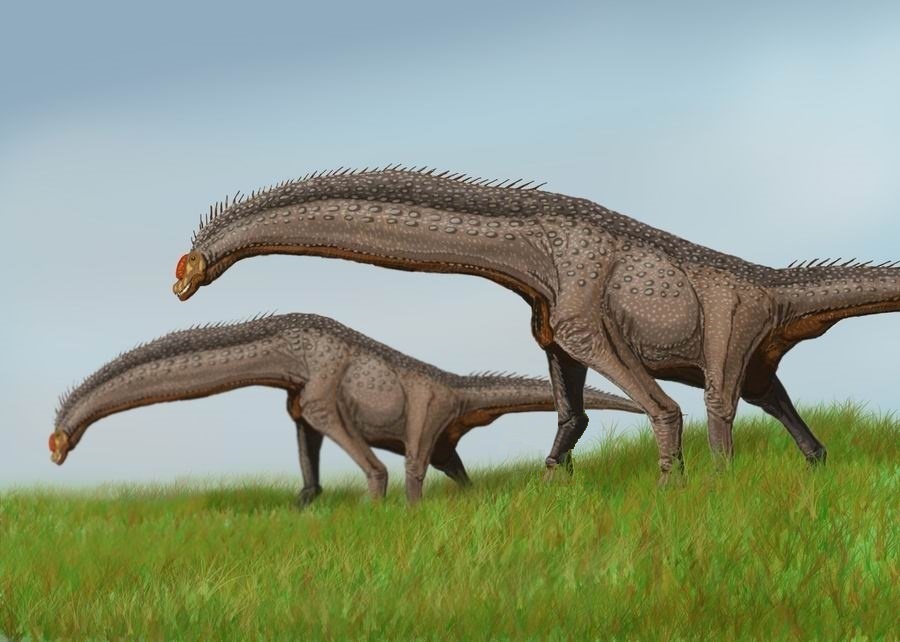
We usually find fossils in a specific and consistent order in the rock layers all over the world. However, they sometimes pop up in places where they are least expected. One well-known example was the discovery of grass in fossilized dinosaur droppings.2 Grass was long thought to have evolved after the dinosaurs became extinct. This pushes the first appearance of grass in the fossil record lower into the underlying dinosaur-bearing layers. Another example concerns the discovery of footprints left behind by a four-legged amphibian-like creature in Poland, believed to have evolved from fishapods. But conventional dating of the prints pre-date the fishapods by 18 million years!3
While these fossil discoveries were surprising in their day, merely finding some organisms in rocks slightly older or younger than expected does not invalidate the general order observed in the fossil record. Put another way, this would be like finding a chocolate chip in our otherwise berry-filled pancake.
What are Index Fossils?
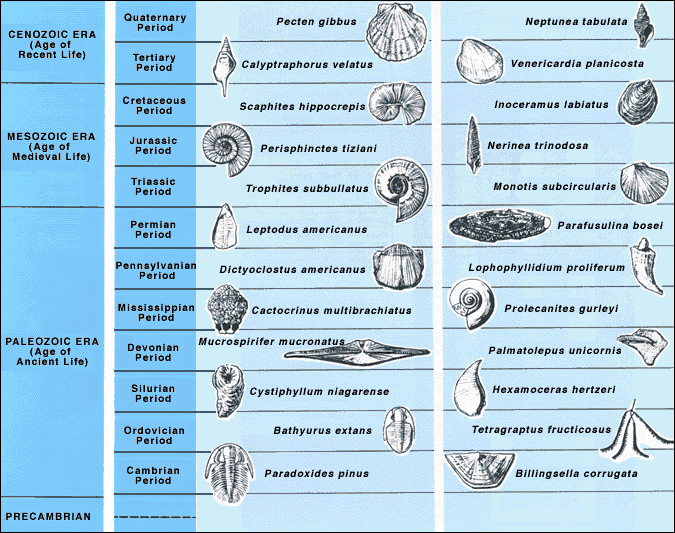
If you see one photograph of a lion on a grassy plain, you will probably realize it was taken in East Africa. If a second showcases a polar bear striding across ice floes, you have good reason to think it was taken in the Arctic. Meanwhile, a third picture with a kangaroo hopping through a barren scrubland is a good indication you’re looking at the work of a photographer in Australia.
In very much the same way, some fossils are an excellent indicator of what other fossils might be expected to occur in a certain rock layer. These are called ‘index fossils.’ They help scientists tell exactly what rock layer they are looking at in comparison to the whole.
Let’s Look at Some Examples!
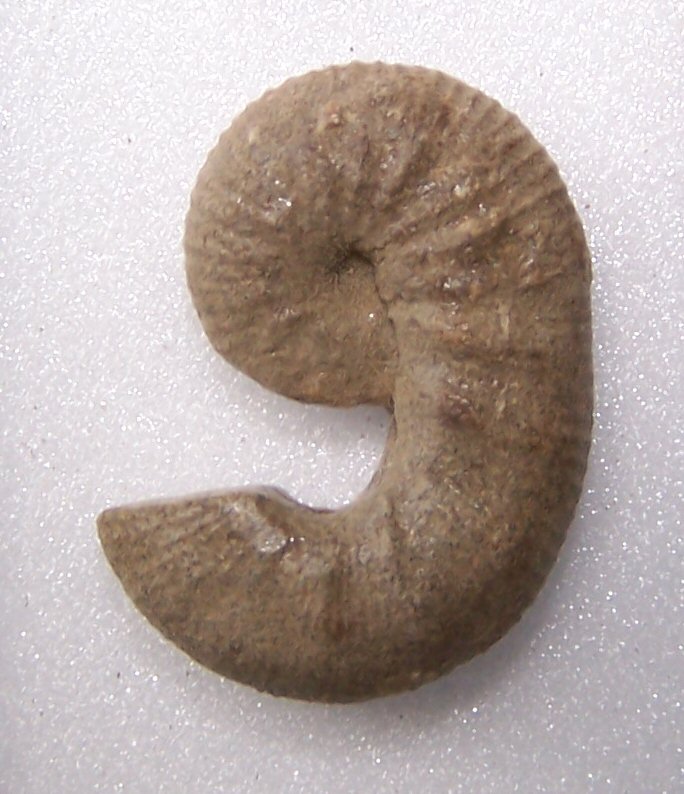
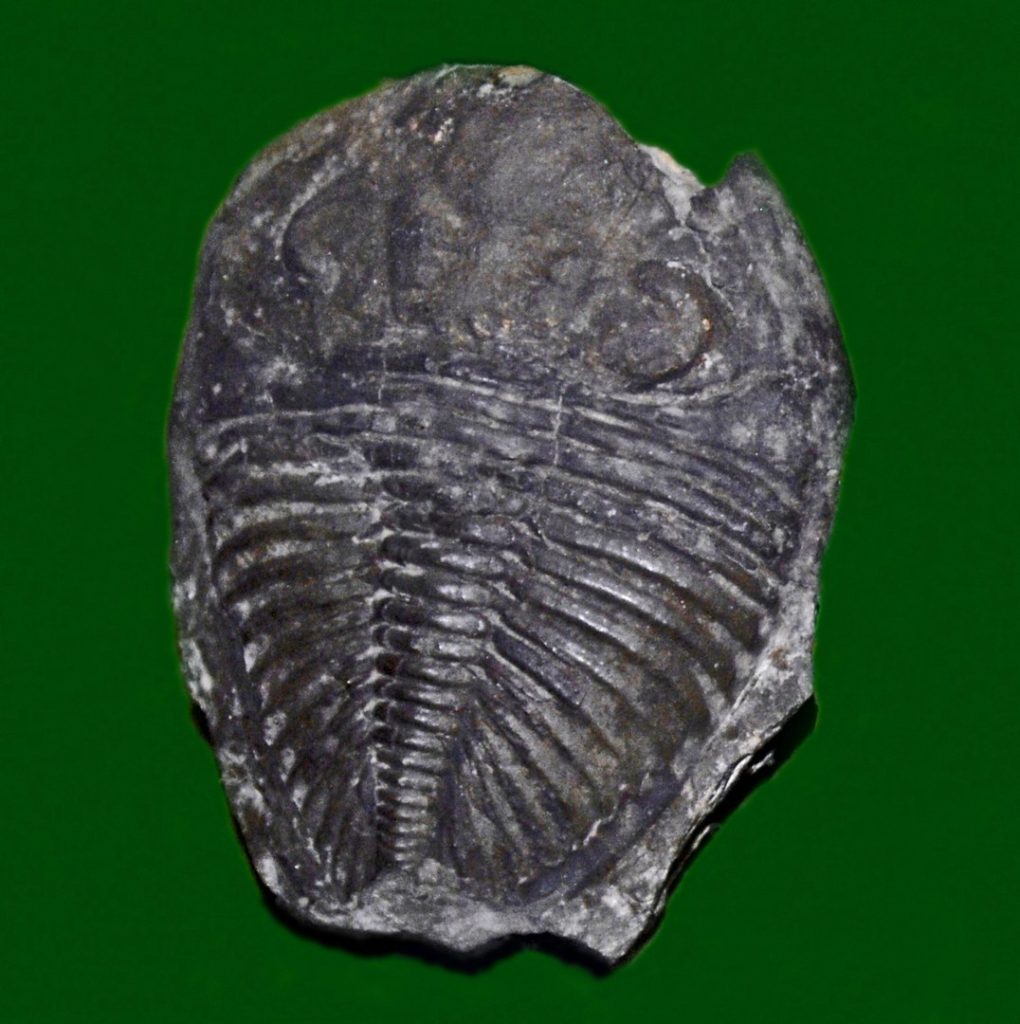
One very common index fossil is Paradoxides pinus, a species of trilobite (pillbug-like marine creature). If a scientist is studying a rock layer and finds Paradoxides pinus, they instantly know that the rock layer in question is from the mid-Cambrian. Alongside this species are other mid-Cambrian species, like certain clam-like creatures called brachiopods, and glass sponges.
Meanwhile, Scaphites hippocrepis, another index fossil, is one we only find in upper Cretaceous rock layers. This ammonite species (a shelled, squid-like creature) is never found in lower layers with trilobites, and trilobites are never found in upper layers with these particular ammonites. As such, scientists can use index fossils to ascertain which rocks and fossils they are studying in the field.
It is sort of like how finding berries in one of our pancakes might tell us where in the pancake stack we are. Ideally, index fossils are usually widespread and common species of shelled, marine creatures. This is because their tough shells make them very resistant to decay and scavengers, unlike the remains of other animals.
Where Does the Fossil Record Fit On the Biblical Timeline?
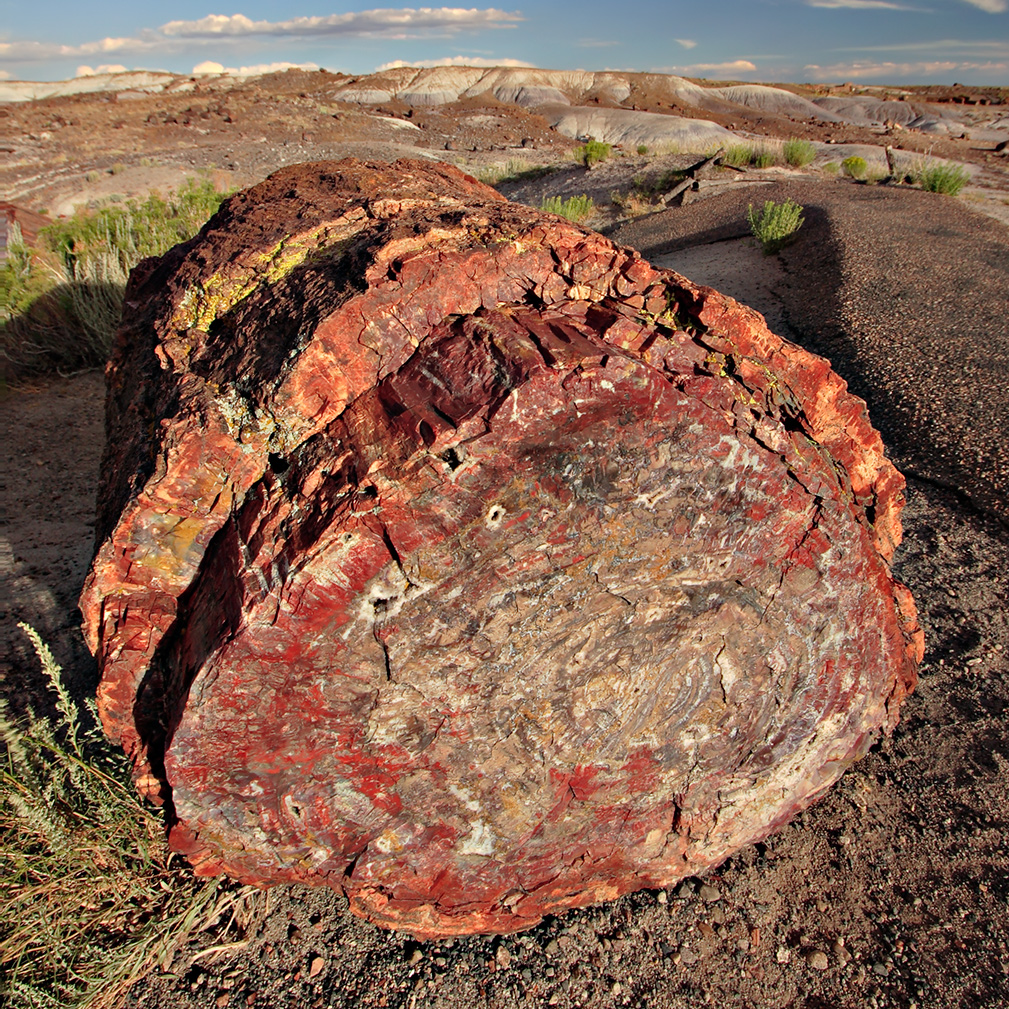
Many people think that the fossil record proves young-earth creationism false. They cannot think of any other way it could have formed aside from evolution over millions of years. But this is not based on any fossil data itself. It is based on the paradigm (or worldview) they are imposing upon that data. These people approach the fossil record based on the premise that it is the result of the gradual accumulation of lifeforms that were buried and preserved by geologic forces like those at work today. This discounts the very possibility of a global Flood, as described in the Book of Genesis!
However, there are actually a number of factors within the young-earth Creation/Flood model that may have played a role forming the fossil record within the realms of biblical history. In particular, we will examine three main times of biblical history during which fossils may have formed. These are Creation Week, the Flood, and the post-Flood era.
Creation Week Fossils

Why do the lowermost layers of the fossil record consist of almost entirely “simple” marine lifeforms, like algae and microbes? Why don’t they contain more “complex” animals like dinosaurs, fish, or humans?
Before Day 3, when the waters formed, they may have teemed with these marine microbes.4 It has been suggested that God could have used them to pump oxygen into the atmosphere. On Day 3, God uplifted the submerged earth’s landmass from beneath the waters. Sediment-laden waters rushed off the continent, deeply burying these microorganisms and ensuring their fossilization.
But how could there be death during Creation Week? Since the death of what the Bible calls nephesh chayyāh (נפש חיה), or ‘living creatures,’ could not have occurred until after the Fall of Man, the fossils of people and animals could also have not been formed until after that point.5
However, while algae, microbes, and other “simple” lifeforms are biologically alive, they do not appear to be alive in the way the Bible defines the term.6 Leviticus 17:11 states that “…the life is in the blood…” In addition, biblical life is described as “in whose nostrils is the breath of life” (Genesis 7:21-22). Therefore, the lowermost fossils in the fossil record may have been formed during Creation Week itself.
Fossils from the Flood
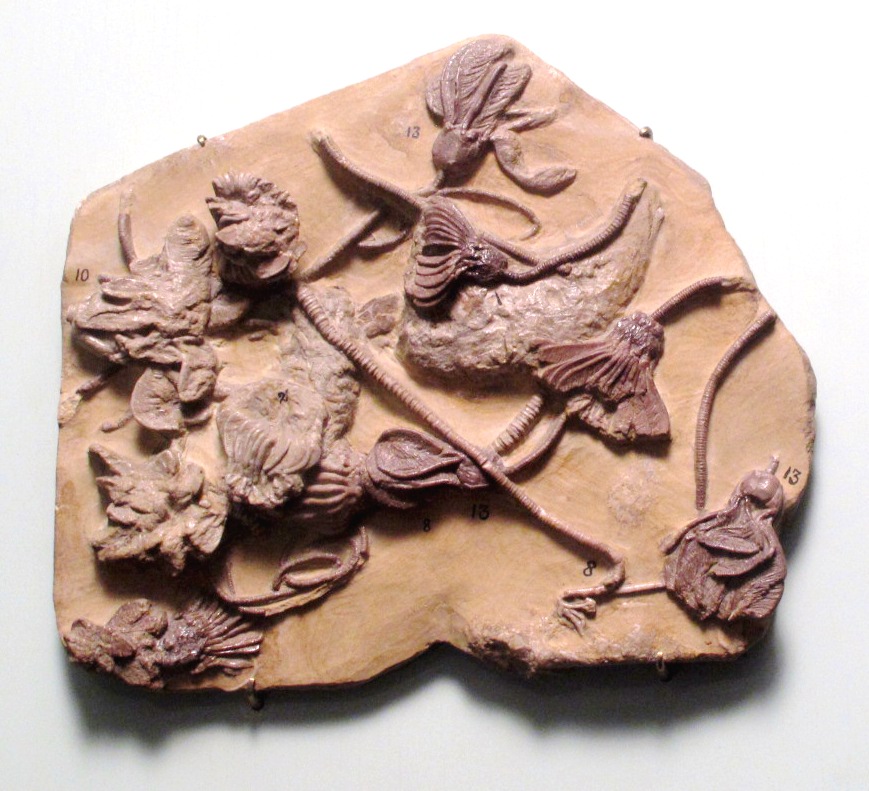
Flood skeptics think that any lifeforms alive at the time of the Flood would all be chaotically buried in a single layer. This is a misleading argument based on what modern, local floods do. The global Flood of Noah’s day was much more complex. A variety of factors could have determined the order of any lifeforms it buried and preserved.
Ecological Zonation
Many young-earth creationists have suggested that the order of fossils buried during the Flood may reflect the order in which the Flood destroyed them. One by one, the floodwaters swept away distinct communities of plants and animals. It transported them and buried them in their final resting place.7,8,9,10 As the floodwaters’ destruction advanced, deep sea communities fell victim first, followed by those in nearshore shallow waters, then on the shorelines, and finally those further inland.
Escape Ability
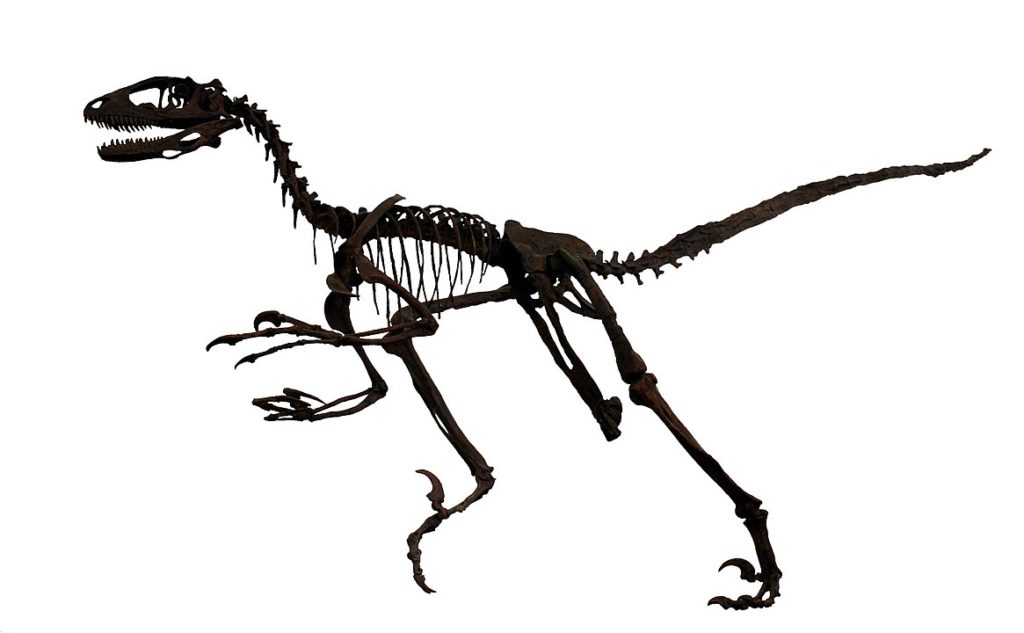
A species’ ability to escape the incoming floodwaters may have played a role in determining whether the Flood buried them earlier or later.11,12 Species that were more intelligent may have been better able to sense that they were in danger. Those with a higher metabolism and those that were more mobile may have been able to delay their demise until much later in the Flood.
Fossils from After the Flood
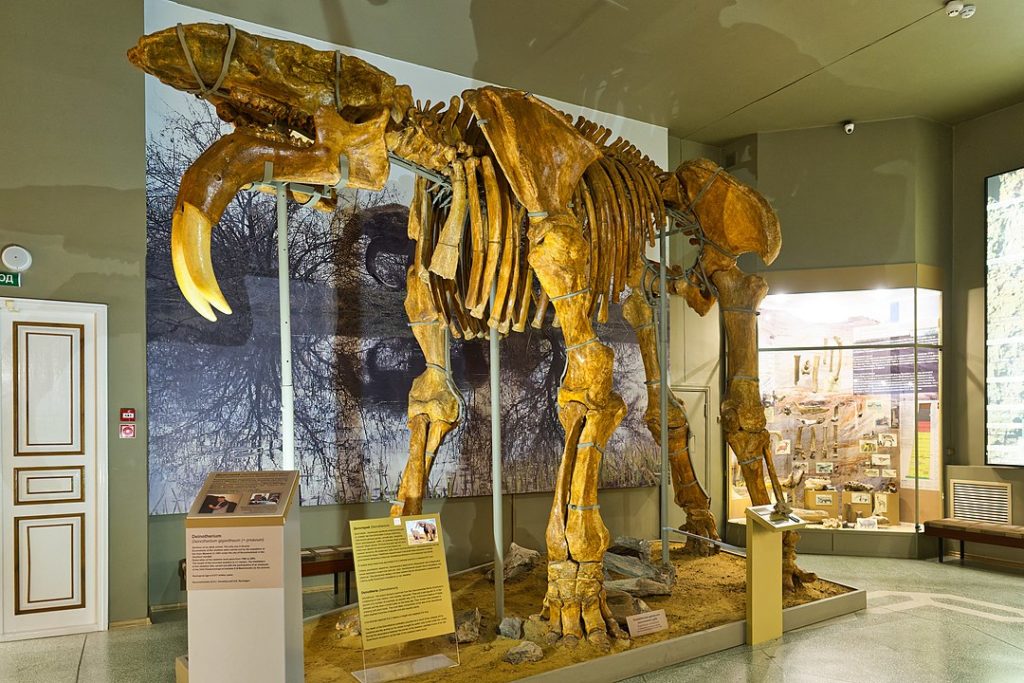
Most young-earth scientists do not think that all fossils are from organisms that died during the Flood. Rather, they propose that a significant portion of the fossil record formed in its aftermath. As such, they see several factors that might influence when certain lifeforms appear and disappear from the fossil record during this period of time.
Within-Kind Diversification
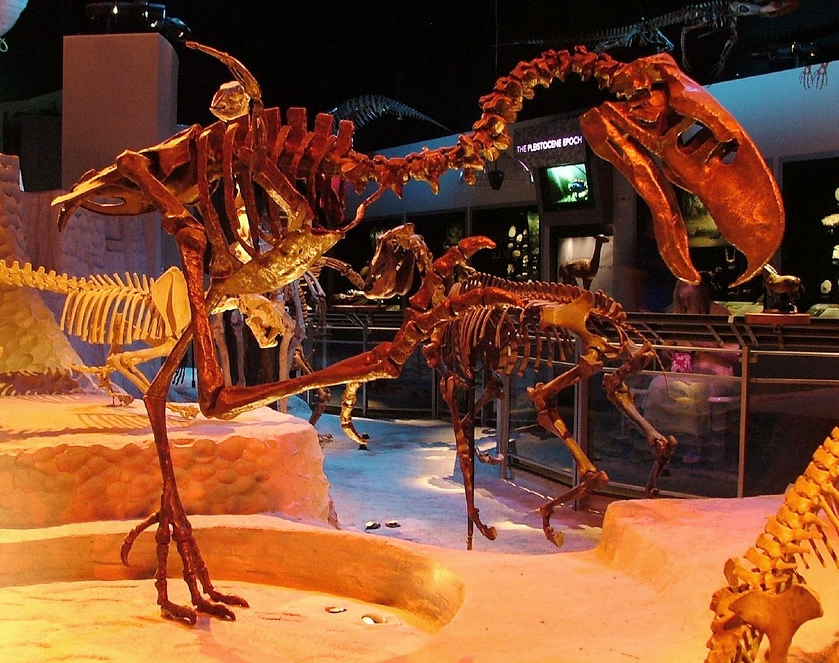
God designed each kind of plant and animal with the ability to adapt, change, and diversify in accordance with their environment.13 In many cases, these types of changes generated entire lineages of new species. Because of this, young-earth scientists can explain some fossil sequences as a result of change within a lineage overtime.14,15,16
Biological Relocation
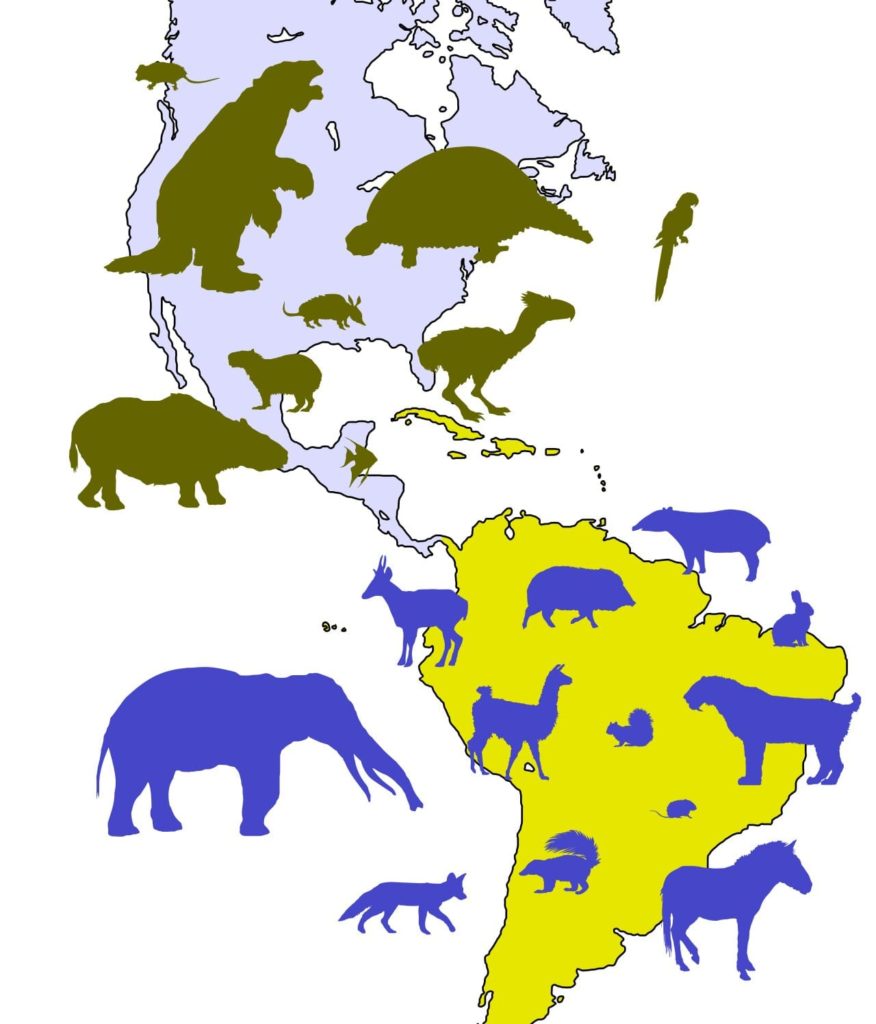
Most young-earth paleontologists think that the majority of continental movement occurred during the Flood. However, some have suggested that there may have been some residual movement after the Flood as well.17,18,19 If so, lifeforms living on the landmasses would have been taken along for the ride. When one landmass collided with another, it would have provided lifeforms with an opportunity to colonize new areas. They might outcompete and replace previous ecological communities in the process.
The Great American Interchange is a classic example of biological relocation. South America became conjoined to North America via the Isthmus of Panama at this time. This allowed species native to North America to migrate south, and species native to South America to migrate north.
Reproductive Rate

Animals and plants that survived the Flood had to recolonize the earth. In the process, we might expect the order in which they first appear in the post-Flood fossil record to reflect reproductive rates.20 Animals that could produce large litters at a time, and do so often, would proliferate throughout the earth first. As a result, they might show up in the fossil record long before animals that reproduce more slowly.
Mega-Successions

In the wake of volcanic eruptions, wildfires, floods, and other natural disasters, nature tends to recover in a series of predictable steps called ecological succession. The recovery process begins when a handful of pioneering plants and animals move into a devastated ecosystem. The ecosystem develops over time through increasing complexity, resulting in what scientists call a climax community. After the Flood, we might expect ecological succession on a worldwide scale, something that scientists call a mega-succession.21
Climate Change
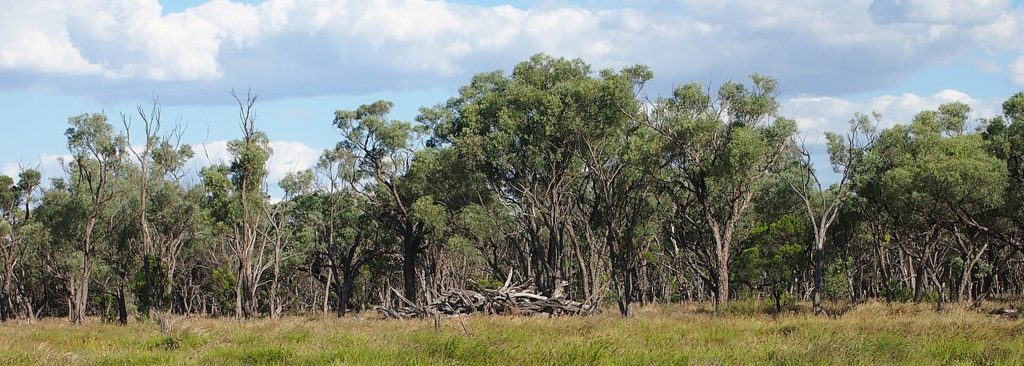
The volcanic and tectonic activity during the Flood left the early post-Flood oceans considerably warm. This made the Earth into a warm and wet world until regressive cooling of the climate brought up the Ice Age.22 As a result, animals and plants better suited for such conditions would have flourished. Meanwhile, those who preferred cooler, drier climates would not have been able to come into their own until later in the post-Flood era.
How is the Fossil Record Relevant to Young-Earth Creationism?
The fossil record is a well-spring of evidence for young-earth creationism. Let’s look at a few examples:
Explosions of Life
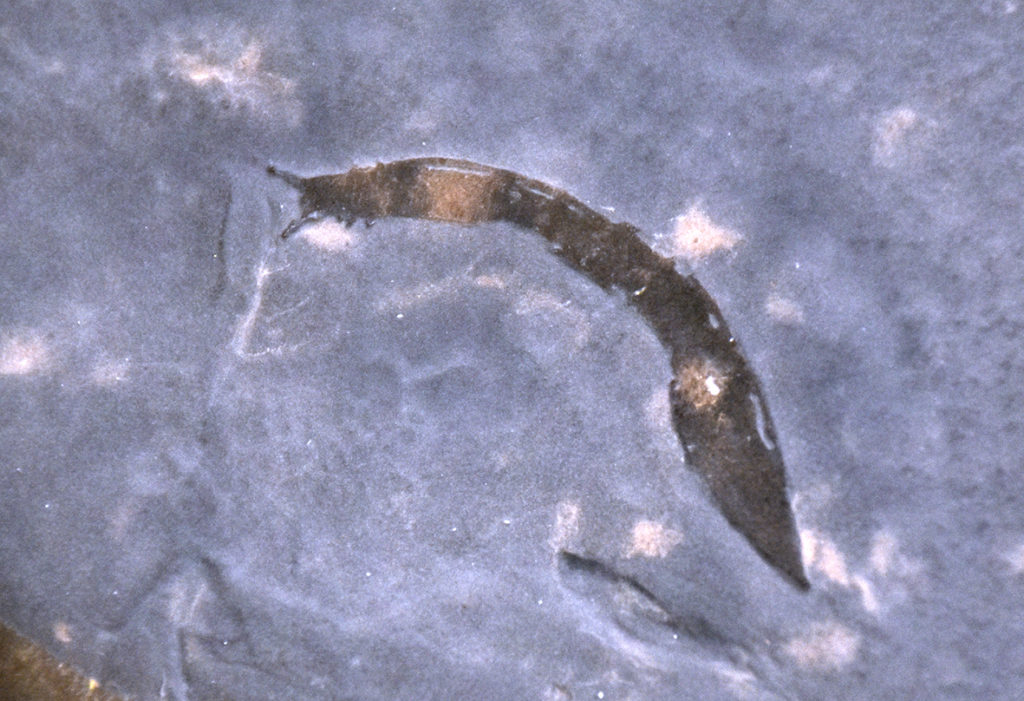
Throughout the fossil record, we see abrupt appearances—“explosions” if you will—of major groups of organisms. Turning back to our pancake stack analogy, this would be like ordering a five-stack plate of only berry pancakes. But to your surprise, there isn’t a single berry in the top pancake—only nuts! The sudden appearance of some major animal groups in the fossil record may represent the advancement of waters during the Flood. As discussed above, each surge would have picked off one distinct ecological community after the next.
The Cambrian Explosion is an excellent example of an explosion of lifeforms.23 Below the Cambrian Explosion, layers that contain fossils are few and far between. Of the fossils that are found in these layers, most of them are single-celled algae and microbes, and a few are very unlike any organisms we are familiar with today. The Cambrian Explosion represents the sudden appearance of almost every major group (or phyla) of animal.
We also see explosions of life in the post-Flood fossil record. These are likely the result of the mega-succession recovery, as discussed above, happening on a global scale. The Paleogene Mammal Explosion is one such example of this.24 After the Flood, every kind of air-breathing land mammal dispersed from the Ark and throughout the world. As they repopulated the planet, many of them died in local or regional natural disasters which subsequently buried them above layers containing fossils of animals that died during the Flood.
Rapid Burial
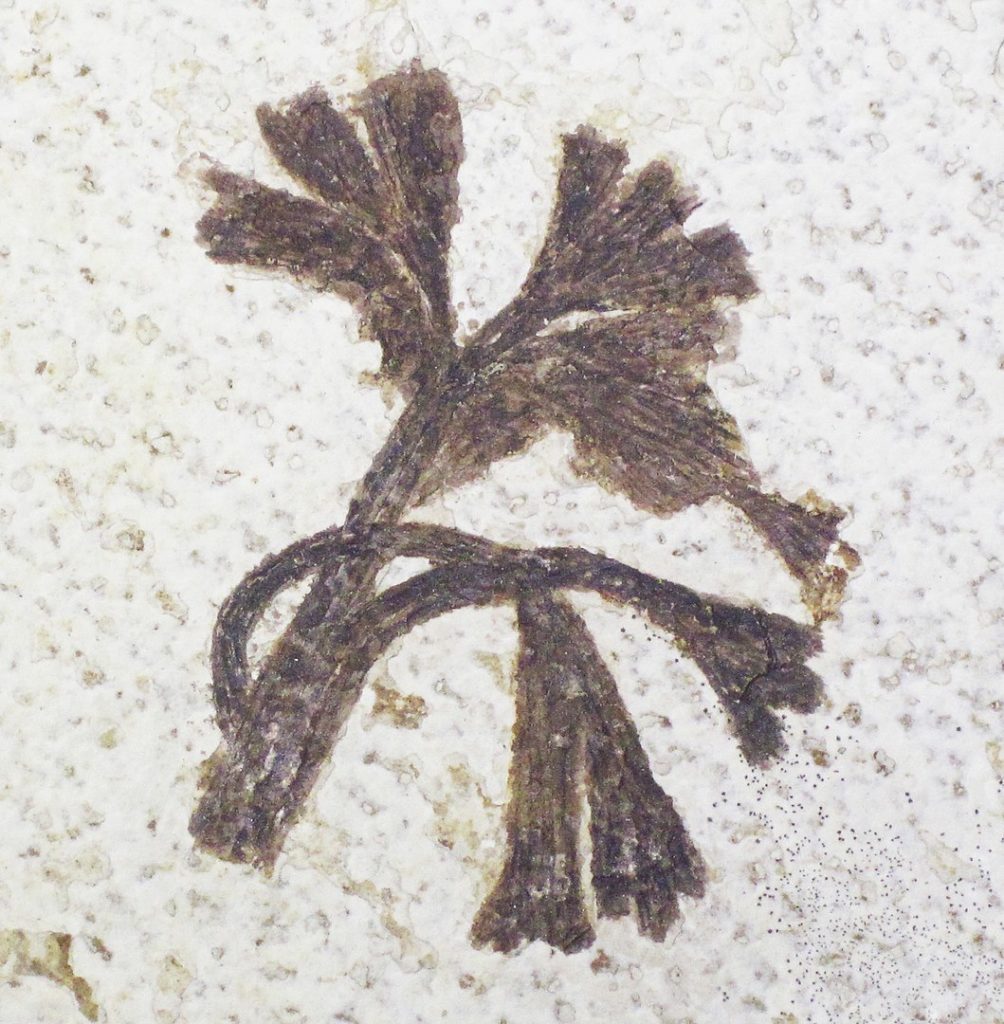
When living things die, their remains generally do not last very long when exposed to the elements.25,26 Either scavengers will eat them or they will decay into nothingness. This usually happens within weeks or months depending on the organism. So when we find fossil remains of organisms, we know that something very unusual happened that led to its preservation. Usually, this is rapid burial under enough sediment to keep the organism protected from the elements and scavengers. The sheer abundance of fossils in the geologic record is evidence that the sediment layers containing those fossils formed relatively quickly, even catastrophically at times. This aligns very well with the thousands-of-years timespan of young-earth creationism.
Completeness of the Fossil Record
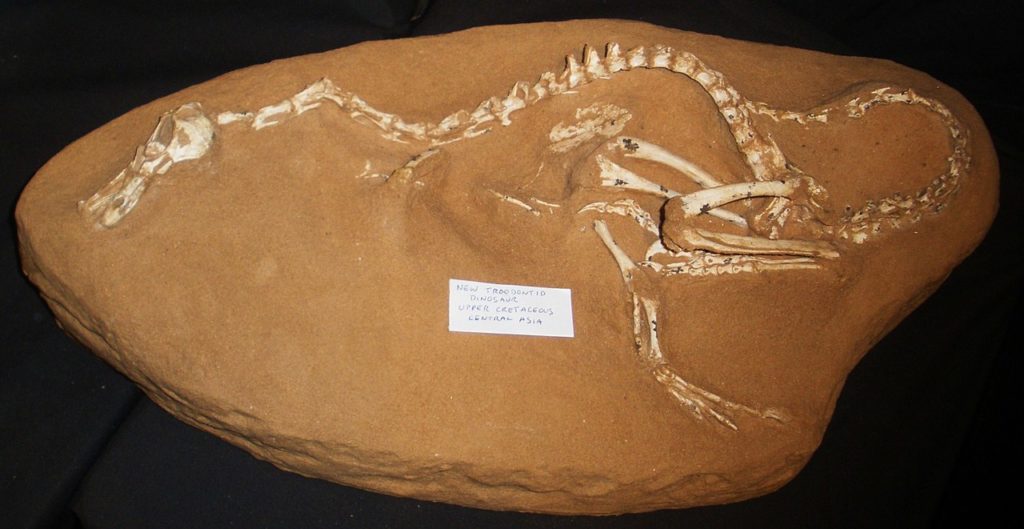
Young-earth paleontologists believe that most of the fossil record formed within a few thousand years, during the Flood and its aftermath. If so, this implies the overall rate at which sediment accumulated was much faster in the past. As discussed above, this greatly increases the likelihood that lifeforms would be buried and preserved. We might expect, therefore, that almost everything that has ever existed, whether living or extinct, is represented somewhere in the fossil record. In other words, we would expect the fossil record to be a virtually complete record of the history of life on earth.
Does this prediction pass inspection? We can determine this by looking at what percentage of modern species are represented in the fossil record. One study found that 88% of all mammal species living in Europe today are also found in Europe’s fossil record, while 99% of them are at least represented in the fossil record somewhere on our planet.27 Another study found that 76.8% of all marine mollusk species that reside along the coasts of southern California and Baja California are represented in the fossil record.28 This is good evidence that what we see in the fossil record matches with what we would expect from a young-earth timescale.
Areas of Future Research
How do we explain Index Fossils?
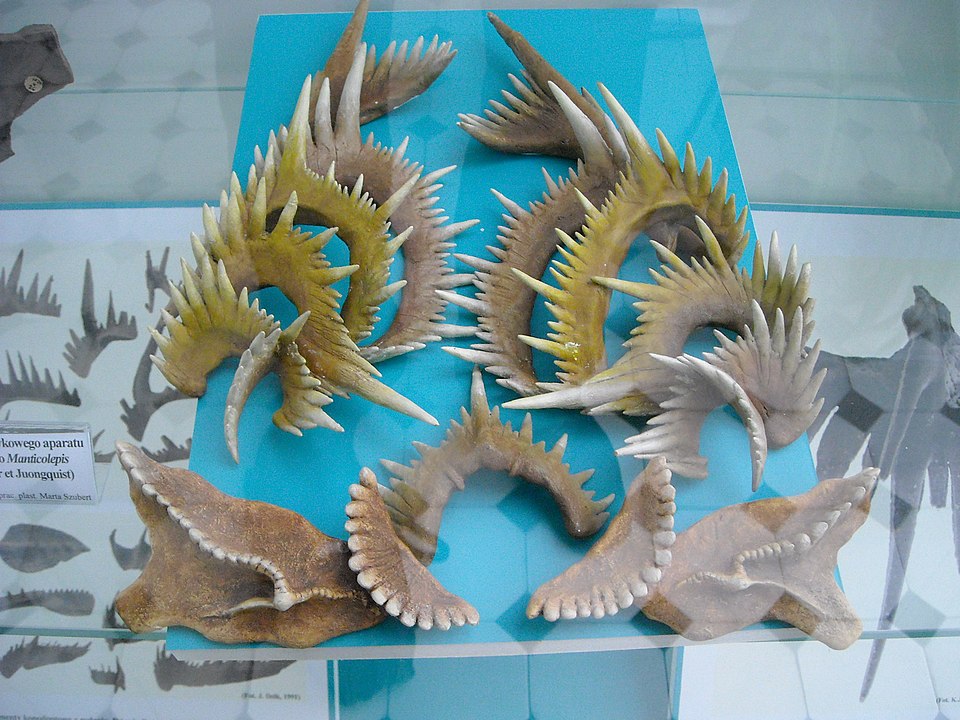
Regardless of which portion of the fossil record we think formed during the Flood, how do we explain index fossils in the context of a worldwide, catastrophic deluge? Why should some species of pollen, plankton, or conodont be buried only in between other specific species of pollen, plankton, or conodont? The order in which specific species of index fossils were buried might reflect where they were living before the Flood, or perhaps even the movements of tectonic plates and current patterns during the Flood. Ultimately, this matter will require more research to resolve.29
Why Do We Have So Few Human Fossils?
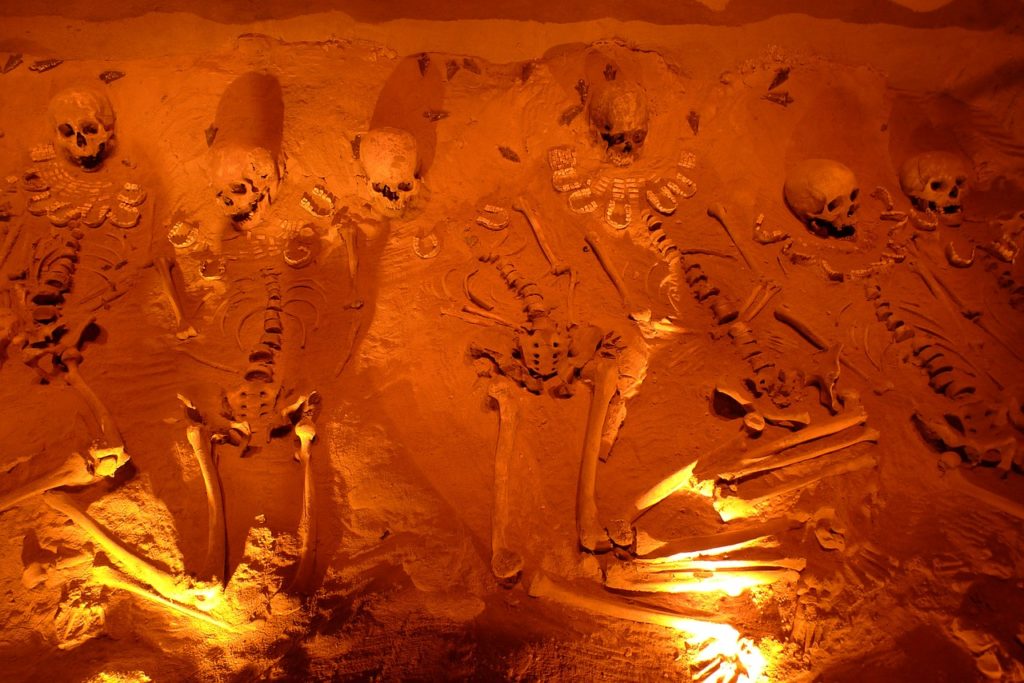
Humans have existed since Day 6 of Creation Week, yet their fossils are few.
Why is that?
This is another area of active research among young-earth scientists. There are a few things to consider as they wrestle with this important matter.
For one thing, the fossil record does not present us with a perfect snapshot of every lifeform alive at any given point in history. Many unique conditions must be met in order for a lifeform to be preserved as a fossil. It may be that humans mostly lived in regions that were not friendly toward forming fossils throughout the majority of geologic history. In addition, the characteristics of the lifeform itself plays a factor in fossilization. Those with large, durable bones (like sauropods and whales) or tough shells are more likely to endure the process. Humans possess neither of these features, making it more unlikely their remains would fossilize naturally or without aid.
Compared to many animals, humans are relatively slow breeders. They may have been too few in number to have had much influence on the fossil record.30
Human remains could also be subject to cultural burial practices. Many early people groups practiced desiccation. They would leave their dearly departed out where birds could pick at their bones. Some believed that the birds carried the dead person up into heaven. Once the bones were cleaned, they would be buried in a cairn or tomb. Even cultures that didn’t practice desiccation often buried their dead in rock-cut tombs, which would not be conducive to fossilization.
Unlike most lifeforms, humans were specifically choosing where to bury their dead. This may lessen the number of remains they would leave behind in places where fossilization was more likely.
Where Did All the Pre-Flood People Go?
Human fossils also appear to be absent from Flood rocks. It may be that the human population in Noah’s day lived in places that were not favorable toward fossilization. Perhaps they were clever enough to escape the initial phase of the Flood, postponing their demise.
Research by geologists Harry Dickens and Dr. Andrew Snelling,31 and Dr. Aaron Hutchison32 suggests that the waters expelled from the ‘fountains of the great deep’ were acidic. Any humans or animals caught in their torrents may have been abraded away.
Conclusion
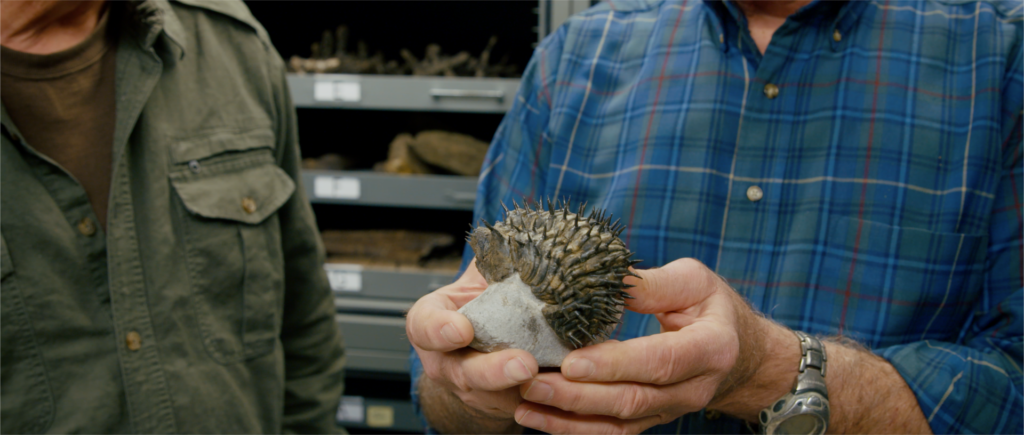
The fossil record brilliantly displays the diverse array of organisms that have lived across the planet’s surface since its inception. Through it, we can compare the various communities of plants and animals that once existed. It can teach us a lot about the unique, catastrophic processes at work during the Flood. When we study the post-Flood fossil record, we can get a better idea of how different types of plants and animals adapted, changed, and diversified after that worldwide cataclysm. Using God’s Word as our guide, the fossil record serves as a wonderful tool we can use to piece together a picture of the history of God’s Creation through time.
Where Can I Learn More About the Fossil Record?
What is Paleontology?
Where is Noah’s Flood in the Geologic Record?
A Whale of a Tale About Whales: New Paradigms on Whale Origins
Footnotes
- Oard, M. (2010). Are fossils ever found in the wrong place? Journal of Creation, 32(3), 14–15. ↩︎
- Piperno, Dolores R.; Sues, Hans-Dieter (18 November 2005). “Dinosaurs Dined on Grass“. Science. 310 (5751): 1126–1128. ↩︎
- Niedźwiedzki, Grzegorz; Szrek, Piotr; Narkiewicz, Katarzyna; Narkiewicz, Marek; Ahlberg, Per E. (7 January 2010). “Tetrapod trackways from the early Middle Devonian period of Poland”. Nature. 463 (7277): 43–48. ↩︎
- Purdom, G., and A.A. Snelling. 2013. “Survey of microbial composition and mechanisms of living stromatolites of the Bahamas and Australia: Developing criteria to determine the biogenicity of fossil stromatolites.” In Proceedings of the Seventh International Conference on Creationism, ed. M. Horstemeyer. Pittsburgh, Pennsylvania: Creation Science Fellowship. ↩︎
- Klein, Z. and Klein, H. 2020. “Effects of the Fall on the Physical Creation: A Biblical Analysis.” Answers Research Journal 13 (2020) 95–111. ↩︎
- Pitman, D. 2017. “Nephesh chayyāh – A matter of life . . . and non-life.” Creation Ministries International. ↩︎
- Clark, Harold, W., 1971. “Paleoecology and the flood.” Creation Research Society Quarterly 8( 1): 19-23. Reprinted in Speak to the Earth, ed. George F. Howe, Presbyterian and Reformed Publishing co., 1975, pp. 161-171. ↩︎
- Clarey, T.L., and D.J. Werner. 2018. “Use of sedimentary megasequences to re-create pre-Flood geography.” In the Proceedings of the Eighth International Conference on Creationism, ed. J.H. Whitmore, pp. 351–372. Pittsburgh, Pennsylvania: Creation Science Fellowship. ↩︎
- Wood, T.C. and Murray, M.J. 2003. Understanding the Pattern of Life: Origins and Organization of the Species. Broadman and Holman Publishers, Nashville, Tennessee, pp.188-191. ↩︎
- Matthews, M. (2017, June 5). “Field Trip.” Answers in Genesis. ↩︎
- Clarey, T., & Tompkins, J. (2015). “Determining Average Dinosaur Size Using the Most Recent Comprehensive Body Mass Data Set.” Answers Research Journal, 8, 85–93. ↩︎
- Robinson, S. J. 1996. “Can Flood Geology Explain the Fossil Record?” Creation Ex Nihilo Technical Journal 10, no. 1 (April): 32–69. ↩︎
- Carter, R. (2021, July 11). “Species were designed to change, part 1.” Creation Ministries International. ↩︎
- Cavanaugh, D.P., Wood, T.C. and Wise, K.P. 2003. “Fossil Equidae: a monobaraminic, stratomorphic series.” pp.143-153 in: Ivey, R.L., Jr. (editor). Proceedings of the Fifth International Conference on Creationism. Creation Science Fellowship, Pittsburgh, Pennsylvania. ↩︎
- Robinson, 1996, 32–69. (Footnote 12) ↩︎
- Scheven, J. 1990. “The Flood/Post-Flood Boundary in the Fossil Record.” In the Proceedings of the International Conference on Creationism: Vol. 2 , Article 56. ↩︎
- Robinson, 1996, 32–69. (Footnote 12) ↩︎
- Coulson, K. 2021. “Using Stromatolites to Rethink the Precambrian-Cambrian Pre-Flood/Flood Boundary.” Answers Research Journal 14 (2021): 81–123. ↩︎
- Arment, C. 2020. “To the Ark, and Back Again? Using the Marsupial Fossil Record to Investigate the Post-Flood Boundary.” Answers Research Journal 13: 1–22. ↩︎
- Robinson, 1996, 32–69. (Footnote 12) ↩︎
- Scheven, J. 1990. “The Flood/Post-Flood Boundary in the Fossil Record.” In the Proceedings of the International Conference on Creationism: Vol. 2 , Article 56. ↩︎
- Gollmer, S.M. 2018. “Effect of aerosol distributions on precipitation patterns needed for a rapid Ice Age.” In the Proceedings of the Eighth International Conference on Creationism, ed. J.H. Whitmore, pp. 695-706. Pittsburgh, Pennsylvania: Creation Science Fellowship. ↩︎
- Erwin, et al. 2011. “The Cambrian conundrum: Early divergence and later ecological success in the early history of animals.” Science 334(6059):1091-1097. ↩︎
- Springer, Mark & Murphy, William & Eizirik, Eduardo & O’Brien, Stephen. 2003. “Placental mammal diversification and the Cretaceous-Tertiary boundary.” In the Proceedings of the National Academy of Sciences of the United States of America. 100. 1056-61. ↩︎
- Whitmore, J. 2006. “Exploding fish: evidence for rapid burial.” Answers 1(2):27-31. ↩︎
- Whitmore, J. 2007. “Should fragile shells be common in the fossil record?” Answers 2(2):78-81. ↩︎
- Baldwin, S. and Kurten, B., 1968. “Pleistocene Mammals of Europe.” Man, 3(3), p.490. ↩︎
- J. W. Valentine, “How Good Was the Fossil Record? Clues from the California Pleistocene,” Paleobiology 15 no. 2 (1989): 83–94. ↩︎
- Let’s Talk Creation. (2021, August 30). Episode 14: “Genealogical Adam, Micro-Fossils, and Fowl Baramins” [Video]. YouTube. ↩︎
- Robinson, 1996, 32–69. (Footnote 12) ↩︎
- Dickens, H., Snelling, A. 2015. “Terrestrial Vertebrates Dissolved Near Fountains.” Answers Research Journal Vol 8: 437-447. ↩︎
- Dickens, H. and Hutchison, A. 2021. “Geochemical and related evidence for early Noah’s Flood year.” Journal of Creation 35(1):78-88. ↩︎

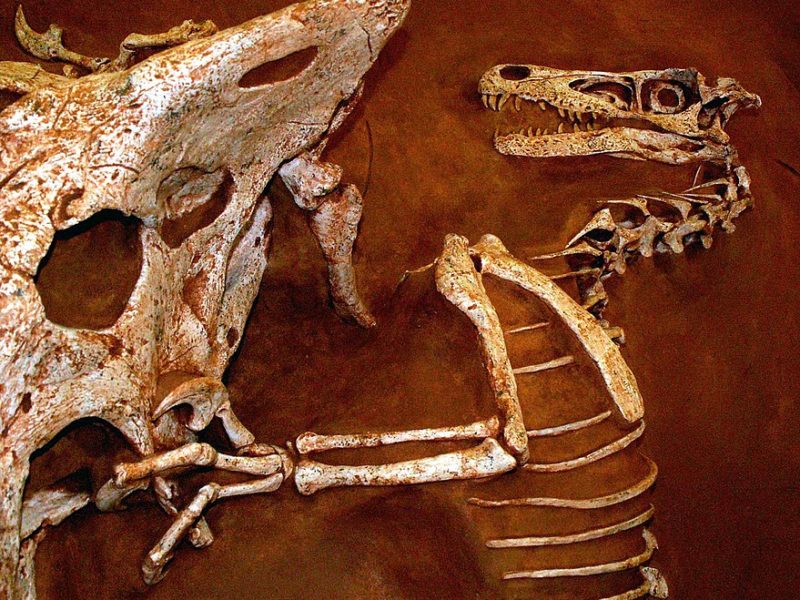





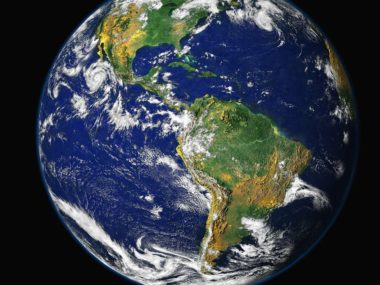




Another well info article. Hits all the points. This creationist sees fossils as very special cases of deposition operations. so only the flood year and then later episodes can create fossil assemblages. So the flood year, then a few centuries later great trouble from the continents unsetlled and rising/falling, then later minor events of ice age creatures overcome.
Thanks to Mr. Ryan for this content! I have another view of why humans are notably absent from the fossil record…there simply weren’t many of them left alive at the time of the flood. If the thoughts of humanity was evil and God grieved over them…it’s quite possible they were near extinction (through war, homicide, genocide, abortion, etc). Perhaps just a few thousand remained…and Noah was blessed to have escaped them with his life!
Hello Ben,
Thank you for taking the time to read my article. I’m glad you found it informative. And yes, I agree that the population of pre-Flood humans may be a factor as to why they are absent from Flood rocks.
Excellent article! Well written and supported. As someone who studied geology in college (four semesters but no degree), alternative arguments, as in creationism versus evolutionism, about earth history and its lifeforms through a study of fossils and the great flood is enlightening, refreshing, and provides a very science-based worldview in opposition to the millions-of-years secular approach. I have always been reminded that creationists and evolutionists evaluate the same evidence and agree on many of the same geological principles; the only difference between the two being the time factor: Thousands versus millions of years. Christian Ryan presented a strong argument, supported by paleontological evidences, for a young-earth view and, in doing so, for bringing Glory to the Word of God.
Thank you for the kind, encouraging words, Bob! 😊